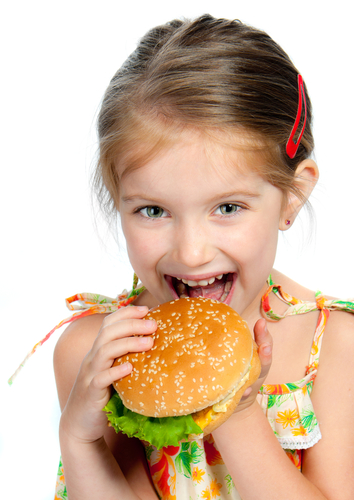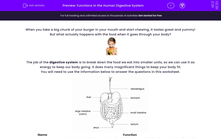When you take a big chunk of your burger in your mouth and start chewing, it tastes great and yummy!
But what actually happens to the food when it goes through your body?

The job of the digestive system is to break down the food we eat into smaller units, so we can use it as energy to keep our body going. It does many magnificent things to keep your body fit.
Look carefully at the information below - you will need to use it to answer the questions in this activity.
.jpg)
| Name | Function |
| Mouth | Contains teeth which cut and tear food before we swallow it, also produces saliva which helps to break down sugars and lubricates the food. |
| Oesophagus | A tube of muscle that connects the mouth and the stomach. |
| Stomach | A muscle bag that churns and mixes food. Some proteins are broken down here. The stomach contains strong acid which kills any bacteria that may have been consumed with the food. |
| Small intestine | A long, narrow tube made of muscle. The final stages of food breakdown occur here before small, useful food molecules are absorbed into the blood. |
| Large intestine | Another tube of muscle, that is wider than the small intestine but shorter. Water used by the body to help break down food in the stomach and small intestine is absorbed, leaving behind waste products which harden to form faeces (poo). |
| Rectum | Stores faeces until it is passed out of the body. |
| Anus | The lower opening of the digestive system. Faeces leave the body through this opening. |
So, that was a lot of information! Just go through it again, before you tackle this activity, OK?
You can return to look at this information by pressing the pink button on the right-hand side of every activity page.







